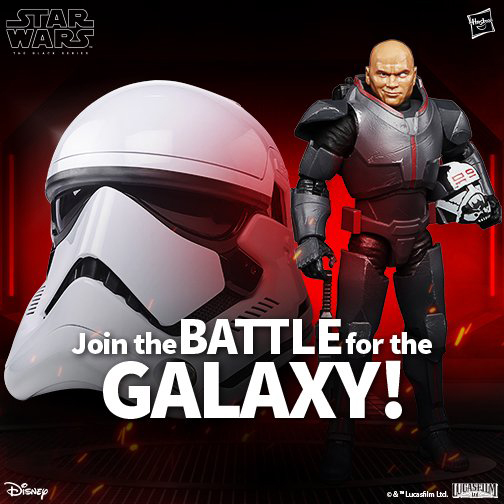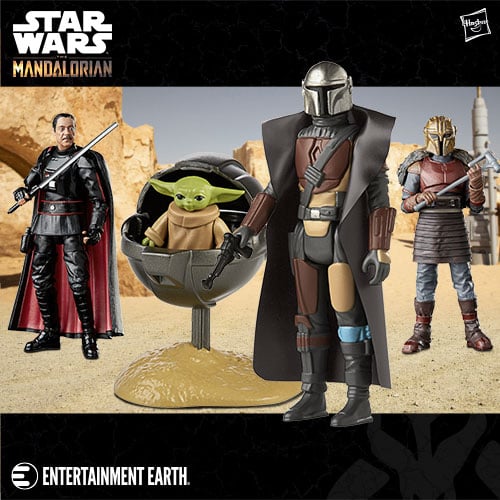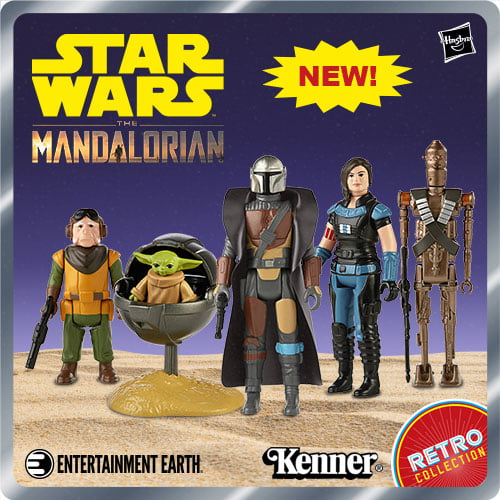TFN Review: Star Wars: Empire And Rebellion: Razor's Edge By Martha Wells
In the first of our new tag-team book reviews, Adam Nettina and Adam Throne share their thoughts on the new novel Star Wars: Empire and Rebellion: Razor's Edge by Martha Wells.
Adam Nettina's Take
Is there a reason the Original Trilogy era, specifically the three years between A New Hope and The Empire Strikes Back, has featured so few adult novels? It’s a question worth keeping in mind as you read through Empire and Rebellion: Razor’s Edge, which marks the first foray into the Star Wars universe from veteran author Martha Wells. Featuring Princess Leia front and center, the novel builds on a fairly recent movement from Del Rey/LucasBooks to re-engage the Original Trilogy timeline, which to this point has been dominated largely by comics, short-stories, and scholastic novels. After reading Razor’s Edge, I’m beginning to think it should stay that way.
Don’t get me wrong; Timothy Zahn’s Allegiance and Choices of One proved that a writer can craft an engaging and relevant novel in the Original Trilogy era, but that doesn’t make it easy to do. Case in point Razor’s Edge, a book with a storyline that seems more designed for a graphic novel. With new characters that remain frustratingly static in their development, and familiar characters who play out trite scenes from the films, Razor’s Edge left me asking why the story was important, and how it fits into the greater Expanded Universe. It also saw me struggling to finish.
I wouldn’t go so far as to say Wells’ book is bad. ‘Average’ is perhaps more appropriate, or even ‘conservative.’ The problem is that it’s limited in its scope and doesn’t take chances in creating dynamic characters or an engaging plotline. For a book with “Empire” in its title, it features a very limited Imperial presence, with a single Imperial character (Degoren, the Commander of an Imperial corvette) contributing to the action. His appearances are limited, however, and with the exception of two rushed battle scenes (to open and close the book, no less), neither he nor the Imperials under him figure into the bulk of the story. Instead, the plot revolves around a wayward trip by Princess Leia and a group of Alderaanean Pirates to an asteroid ‘clearninghouse’ in a backward part of the Mid-Rim, as well as their subsequent attempts to break free from being nominal hostages to the ruthless pirate leader Aral Viest.
While I was at first intrigued by the idea of the wayward and nontraditional pirates of the gunship Aegis, I felt like Wells left them underdeveloped and predictable in their actions. The juxtaposition of Alderaaneans and pirates opened a wealth of opportunities for character development, but Wells missed a chance to expand the back-story or offer compelling insight into the group. Caline Metera, the pirate captain, comes across as a shaken teenager who nevertheless harbors a hard-to-believe fanaticism for Leia and what she, as an Alderaanean Princess, represents. Metera never seems in control of her emotions, and her instant need to protect Leia and receive some kind of gratification for it is hard to swallow. Metera's chief aids, Alia Terae and Dannan Kelvan, aren’t presented as independent from their captain, and act predictably loyal to both her and Leia throughout the story. It’s a dynamic which might make sense given Alderaan’s demise, but it's a dynamic which can’t drive a full length novel (which it does.) It also undermines one of the main subplots of the work; the identity of the traitorous Imperial Agent within the rebel command structure. While the agent isn’t revealed to be Kifar Itran until late in the novel, Wells virtually discredits every other possible character as a leak during the opening stages of the work. Itran, presented as awkward, overzealous, and altogether ‘off,’ is the obvious candidate. Neither an intelligent nor capable villain, he seems more befitting of a comic book character. Speaking of villains, it would have been nice to know a little more about Viest. Written as an incredibly ruthless Lorrdian, she manages to present a brief line about her motivations for her ruthlessness before being killed. I realize it’s a lot to ask for a ‘Thrawn-type’ villain, but the simple, terroristic style of Viest leaves a lot to be desired.
If the supporting cast is less than impressive, the classic heroes aren’t given enough of a chance to make up for the shortcomings. Leia, Han, and Luke aren’t written poorly per say, they just don’t present us with anything necessarily new or exciting to grab hold of. People are undoubtedly going to question how Leia was written, but I think she’s the high point of the novel. Wells writes her inconsistently, which is to say she writes her true to character. Complete with moments of weakness, moments of impulsive and rash decision making, and moments of wisdom and grace, Leia is both human and hero. She’s not afraid to get her hands dirty and grab a blaster in a fight, yet at the same time, she shows a preference towards diplomatic action (like her first interaction with Metera’s pirates) and goes out of her way to establish a moral high ground. She is exactly what Lucas created and what we’ve come to know—a strong and independent young women guided by a sense of purpose and morality that burn brighter than the Core. My issue with Leia was not so much in her characterization, but in Wells’ overuse of Leia ‘moments.’ It’s these trite moments, like the scene in which she’s awkwardly trapped in the refresher with Han, which conspicuously anchor the reader in a sense of Déjà vu in their reference to the films. A single scene might have been a nice touch, but the length to which Wells throws these homages to the Trilogy out (including the incredibly awkward line, “I’m Leia Durane. We’re Here to rescue you”) cheapen the actual scenes from the movies. To top it all off, Wells overuses Han's use of "your Worship," in reference to Leia, while dragging Luke a few months (if not a year) backwards in the naïve farm boy role. Again, the biggest issue is not so much that Han, Leia, and Luke aren't believable or authentic, it's that they are exactly who we've seen before and are as predictable in advancing an otherwise less-than-compelling plot.
To be fair, there are some positives in this book that deserve praise. The repulsor pad “game” featuring Leia, Metera, and the crazy droid was an enjoyably described mixture of UFC Ultimate Fighting and something out of a classic episode of American Gladiators, while Wells’ references to obscure alien species and subspecies is commendable for a first time writer. Likewise, the strange planet with the ruins that obscure sensors is mysterious enough to want to learn more about, and some of the character interactions (for instance, those between Luke and Chewbacca) are witty and fun to read, even if not always in-character for the time period. But for the few highs of the novel, I still found the book a struggle to get through, especially given its concurrent release with the recent Star Wars comics by Brian Wood. The entire subplot of a Rebel traitor runs rampant in the comics (and has been featured one too many times in previous Original Trilogy Era literature) while the minor wins and backwater triumphs of the Rebel Alliance fit more with the Marvel comics of the 1980s than a feature length book of today’s Expanded Universe. Fangirls in particular may find this a stronger read than others, but the average EU reader isn’t missing much by spark noting the storyline for Razor’s Edge.
Beyond the Pages: I really disliked what Wells did with General Willard in the book. While she gets points by working him in to the novel (a decision I have to believe was inspired by her reading of the A New Hope novelization) he is portrayed as a helpless, perhaps militarily-incompetent commander who belongs in a rebellion nursing home. Presumably, someone obtaining the rank of General can still be a leader even when wounded. This would have been a nice opportunity to develop a little-used Original Trilogy character, but Wells missed it.
Say Again?: One of Leia’s enduring quotes from A New Hope is about how Alderaan is peaceful, “with no weapons.” Apparently she was stretching the truth a bit when talking to Grand Moff Tarkin, as the introduction of Alderaanean gunships (like the Aegis) shows. To my knowledge, it’s the first reference to any of these self-defense gunships that I’ve seen in the EU, although I admit my Original Trilogy era comic knowledge lags behind.
Fast and Furious Thoughts:I appreciated the bit of comic relief provided by Andevid, the curiously marooned pirate guard who is later ‘hired’ by Leia and aids in taking down Viest. He’s so woefully out of place doing something even remotely virtuous that he’s hard not to like…Maybe it was just me, but I had difficulty picturing the pirate clearinghouse’s interior space, and found myself wishing I had some sort of visual reference. Another reason why I thought the story would have been better suited for a graphic novel…Finally, certain readers may find Wells' use of dialogue a bit frustrating. There's an unnatural use of having the subject introduce their spoken words. Think, “Han said..."’blah blah blah.’” That might work for a newspaper story, but the frequent use of this style in crediting who is speaking makes the story choppy to read through.
4.5 out of 10 Lightsabers
Adam Throne's Take:
There’s a line in Martha Wells’ Empire and Rebellion Razor’s Edge, thought by Princess Leia, that aptly, if unintentionally, sums up the novel, as well as its effect on the reader, its place in the wider Star Wars universe, and its place in the scheme of Del Rey’s publishing program:
“But there hadn’t been any noticeable gains for the Alliance out of the situation, no new supply source for Echo Base, and that had been made clear to Leia.”
Wells’ novel, while enjoyable as a straightforward (and I do mean straightforward, as the plotline is extremely linear, with few twist or turns that are surprising) Star Wars adventure, features characterizations of the “big three” of the Original trilogy, but without the spark and humor that made their adventures so thrilling; in addition, the characterization of minor players is almost nonexistent, save for a few lines of dialogue or mention of slight connections to a major character through a shared history.
The lack of change to the status quo of the Star Wars universe that’s exhibited in this novel could possibly be forgiven, knowing that the setting is a time when post-A New Hope scenarios could be set up but not contradict the established gospel of the films, and knowing that major characters could take small steps that might advance them onto the next film, but not with the large leaps that novels deserve.
Whether deliberately or not, the plot contains many of the tropes that populated the “EU” stories of the 70s and 80s, including Imperials attacking our heroes’ ship, space pirates, and battles in zero gravity – unfortunately, these tropes are presented blandly, with no new spins, and without the sense of fun and adventure that permeates the original film and the EU of its day. By necessity, modern Star Wars novels have always sought a more adult approach and audience, but that doesn’t mean they have to be generic.
The antagonists, the Lorrdian Veist and Imperial Commander Degoren, are painted in broad strokes, with little nuance or personality, except to serve the plot. Veist’s ability to read body language is an nice touch, and brings some interest and insight to the alien nature of the character (much as Admiral Thrawn’s fascination with art served as his a gateway to understanding the mindset of his enemies), but in the end, little is done with this point. Wells only uses it to have characters reveal information that has already been given in the narration. In fact, this redundancy crops up not only with comments made by Veist, but with Han and Leia as well.
The relationship between Leia and Metera is potentially the most interesting character through-line, and Han’s interaction with the humorless Itran initially shows some characterization striving to break through, but ultimately we know little about these characters other than Leia’s desire to keep her connection to Alderaan. The hope that readers will get to know A New Hope’s Commander Willard is dashed almost from the get-go --we learn nothing about this character, who contributes nothing to the story after getting injured in battle at the start of the book. Forgive the mixed metaphor, but Willard is like a typically inept Starfleet captain waiting to get shown up by Kirk, and his mission to procure supplies for Echo base is a MacGuffin to get Leia to fulfill her arc. Had we been able to spend time with Leia and Willard at the start, their relationship might have meant something.
The most disappointing part of the novel, however, is the relationship between Han and Leia. Presented at an earlier and friendlier stage than their interaction on Hoth, their interplay misses the spark of their pointed exchanges. What will be interesting to see in this series of novels is how Leia’s obsession with driving the rebel cause drives a wedge between her and Han, and makes her (in the words of Han, in the Empire Screenplay) “As cold as this planet”. There’s one moment involving their physical proximity that seems uncharacteristic for a Star Wars novel but reveals another level to Leia. Ultimately, however, the relationship’s lack of true zest here bears no real significance for either Star Wars fans in general or for Han and Leia ‘shippers.
Wells’ strength in the book is in visually painting a portrait of her characters and in describing the settings, whether aboard ships or in the midst of a zero-G game challenge played by Leia. Wells manages to keep the environments and aliens common to A New Hope as the main focus of the story (Alderaan, Yavin’s Commander Willard, the Death Star, Biggs, and Rodians are all involved or mentioned here). This creates a kind of authenticity to the pre-Empire setting, although mentions of Mon Mothma, Sullust, Twi’Leks and General Madine do crop up. In the scheme of the wider EU in recent times, it’s not uncommon to find a mix of elements from all three films, such as Brian Woods’ Star Wars comic. Stuffing a comic set months after ANH with visuals from ESB and Jedi is jarring; here, ESB and Jedi elements are only briefly mentioned, but the story itself stays grounded in references that would be at home in some of the mid-90s Dark Horse Comics or Splinter of the Mind’s Eye. On the downside, Wells’ action sequences are short, whereas there seems to be a good deal of filler describing characters moving from point to point aboard ships and thinking about what they’re going to say).
Beyond the Pages: Luke, Chewie, and the droids make a brief appearance in the Falcon (a neat combination that hearkens back to some of the Marvel Comics storylines in terms of the character pairings), but there’s no real interplay that brings them to life. Luke manages to retain the heroic naivity he often exhibited in other media of this time period, but he has little to do other than serve the kidnapping plot.
Say Again: The discovery by Leia of an Alderaan weapons ship isn’t quite so perplexing when one considers EU stories such as Marvel’s “The Weapons Master;” however, the conundrum of a weapons ship from a peaceful planet could open up a world of possibilities about Alderaan’s own ethics and serve as a point of contention between Leia and Metera – but does not. More has been done with Leia’s connection to Alderaan in one recent issue of Brian Wood’s Star Wars comic than is touched upon in Razor’s Edge; there, it’s handled better, with Leia feeling both internal strife and facing external conflict against a Clone Wars Alderaanian who served in the Empire. The reunification of Leia and the Alderaan pirate ship in Razor’s Edge initiates a storyline that is never really developed into what could have been a very meaningful story arc for Leia. In the end, she has closure, but it’s closure without catharsis.
Empire and Rebellion: Razor’s Edge is a light read that might entertain Star Wars readers new to the EU universe, as well as Han and Leia ‘shippers, more than most Star Wars fans, and it does have some plusses in terms of its portrayal of a pre-Empire EU. The problem with it lies in a storyline that initiates scenarios and character interactions, but never develops them. There are no new gains, no real victories, and while the action mildly engages, it ultimately means little for the growth of the characters, when they should mean so much more. That the book reads in a steady-as-she-goes, serious fashion serves as a reminder that the things which draw most Star Wars fans to the film series – the characters, their complications, and their humor—are the most essential elements of any Star Wars story, no matter when it’s set.
6 out of 10 Lightsabers
Related Stories:
* EU Word Associations Game [v. 2.0]
* RYL - The PT Social Thread: Best Thread Titles on the Internet
* Computer Wallpapers








